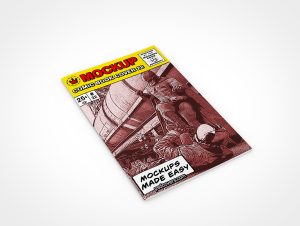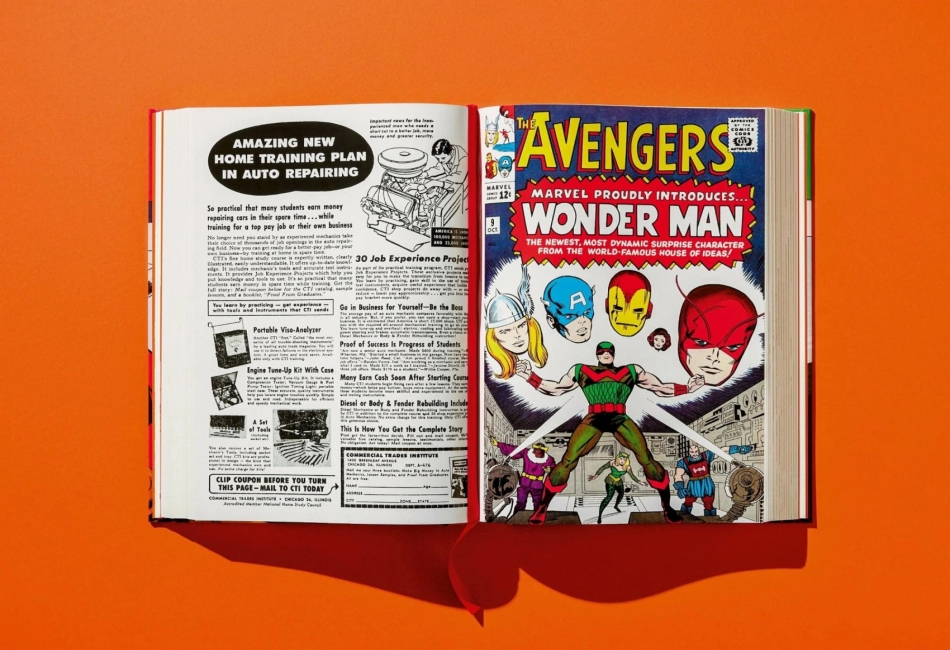The comic book cover is the ultimate gateway into your story—it sets the tone, sparks curiosity, and contributes to as a marketing tool that can drive sales and build your fanbase. While compelling storytelling keeps readers hooked, it’s the cover that convinces them to give your comic a chance. Coming up with creative, effective comic book cover ideas can be a challenge, especially when competing for attention on crowded shelves or digital marketplaces.
This article explores various comic book cover ideas, themes, and concepts to help artists and writers design covers that captivate audiences and communicate narrative essence in one powerful image.
1. The Hero Shot
“Hero shot” is one of the most classic and time-tested comic book cover ideas is the – a single, bold image of the main character in a dynamic pose. Whether it’s Superman flying toward the reader or Spider-Man crouched on a skyscraper, this style emphasizes power, identity, and charisma.
Tips:
- Use dramatic angles (worm’s eye or bird’s eye view).
- Let the character break the frame or overlap the title for intensity.
- Focus on the signature costume or emblem.
2. Action Scene in Progress
Nothing pulls in a reader like a moment frozen in the middle of an epic battle. An in-media-res action cover gives a snapshot of chaos or confrontation, enticing readers to find out what led up to that moment and how it ends.
Ideas:
- Hero clashing with a villain mid-air.
- Explosions, energy blasts, or falling debris around characters.
- Close-quarters combat with emotional intensity.
Pro tip: Freeze the moment just before or just after impact for maximum tension.

3. Dramatic Silhouettes
Using silhouettes creates an air of mystery. It works especially well for character reveals, origin stories, or issue #1 covers.
Concepts:
- A shadowy figure standing against a blazing background.
- Only outlines of multiple characters—letting the reader guess their identities.
- A lone silhouette framed by architecture or nature.
This minimalist approach can be both stylistic and symbolic.
4. Close-Up Emotion Shot
Sometimes, less is more. A close-up on a character’s face, especially with expressive emotion, can speak volumes. Some raw moments like fear, rage, heartbreak— instantly connect with readers on a human level.
Execution tips:
- Focus on eyes and facial tension.
- Use sweat, tears, blood, or cracks in masks to tell a story.
- Minimal background to keep attention on the emotion.
5. Homage Covers
Paying tribute to classic comic book covers or famous works of art is a fun and recognizable way to engage readers. Homage covers mimic the composition of an iconic cover, often with a twist.
Examples:
- Recreate Action Comics #1 with your own character lifting a vehicle.
- Reference Michelangelo’s Creation of Adam in a cosmic or superhero context.
- Mimic vintage Marvel/DC layouts with modern coloring.
These covers appeal to fans’ nostalgia while showcasing your creativity.
6. Team Line-Up or Roll Call
Perfect for ensemble casts, line-up covers display the full team together, often striking poses or walking side-by-side.
Variations:
- Line-up against a height chart (great for crime/heist themes).
- Marching toward the reader through fire or fog.
- Characters facing away, suggesting unity or mystery.
Team covers also help readers quickly grasp the diversity and dynamics of your cast.
7. Split or Mirror Covers
A split cover visually divides the image into two or more parts to contrast characters, timelines, or themes.
Ideas:
- Hero vs. Villain (each side reflecting the other).
- Past and future versions of the same character.
- Real world vs. alternate dimension.
Mirror effects, shattered glass motifs, or opposing color schemes enhance this approach.
8. The Aftermath Scene
The Aftermath Scene shows the repercussions of friction in lieu of the battle itself. Following the conflict covers induce emotion and intrigue.
Examples:
- A tattered cape hanging from a pole in a ruined city.
- A cracked mask lying in a pool of water.
- A lone figure walking away from smoldering wreckage.
These quieter, somber images often suggest deeper, more mature storytelling.
9. Symbolic or Metaphorical Covers
Symbolism goes beyond literal representation and reaches to hints at the story’s themes.
Conceptual approaches:
- A single rose growing through concrete (symbol of hope).
- A clock with melting numbers (time travel or loss of time).
- A chessboard with heroes and villains as pieces.
Abstract or surreal imagery often stands out and can become iconic.

10. Minimalist Covers
A minimalist design uses simplicity to make a bold statement. Often monochrome or with very limited color palettes, these covers focus on one object, icon, or silhouette.
Examples:
- A single blood-stained glove on a white background.
- Just the hero’s emblem with a crack running through it.
- A glowing object floating in darkness.
Minimalism often signals psychological or art-driven narratives.
11. Retro/Vintage Style Covers
Tap into nostalgia by designing a vintage-style cover, complete with old-school fonts, halftone textures, and “aged” print effects.
Common elements:
- Price tag and issue number boxes.
- Thought bubbles or exclamatory text (“Can our hero survive?”).
- Flat coloring or Ben-Day dots.
This is especially effective for parody, homage, or time-travel storylines.
12. Variant Covers and Alternate Realities
Consider creating variant covers—alternate versions of the same issue’s cover, each with a unique art style, artist, or theme. These are often collectibles.
Creative spins:
- Same scene in noir, cyberpunk, or fantasy style.
- What-if scenarios (hero becomes villain).
- Different artists interpretations of the same character.
Variants are great for promotional buzz and expanding artistic expression.
13. Interactive or Breaking-the-Fourth-Wall Covers
Covers where the character is aware of the reader or interacts with the page elements can be funny and unique.
Examples:
- Character peeking out from the barcode box.
- Reaching for the reader with a speech bubble saying, “Don’t open this issue!”
- Holding or tearing the comic title.
These meta-covers are playful and memorable.
14. Illustrated Typography
Instead of relying on traditional titles, let hand-drawn or integrated typography become part of the artwork.
Tips:
- Make the title part of the scenery (like graffiti on a wall).
- Have characters interact with the text—standing on letters or breaking them apart.
- Use typography to enhance mood—jagged for horror, bubbly for comedy, etc.
15. Covers That Raise Questions
Finally, one of the most powerful comic book cover ideas is to pose a mystery. Something unsettling, strange, or impossible should make readers wonder what’s inside.
Examples:
- A hero standing over their own grave.
- A villain holding a familiar weapon with a smirk.
- A city turned upside-down in the sky.
Unanswered questions drive sales and build anticipation.
Conclusion
The best comic book covers grasp attention, stir emotion, and compel curiosity—all within a single image. From fierce action to unpretentious mystery, the right idea relies on your story’s tone and characters. As you blast off these cover concepts, in that case, execution matters just as much as inspiration. Use color, composition, and storytelling techniques to bring your vision to life.
Ultimately, a well-thought-out comic book cover does more than just look good—it opens the door to an unforgettable experience inside.




